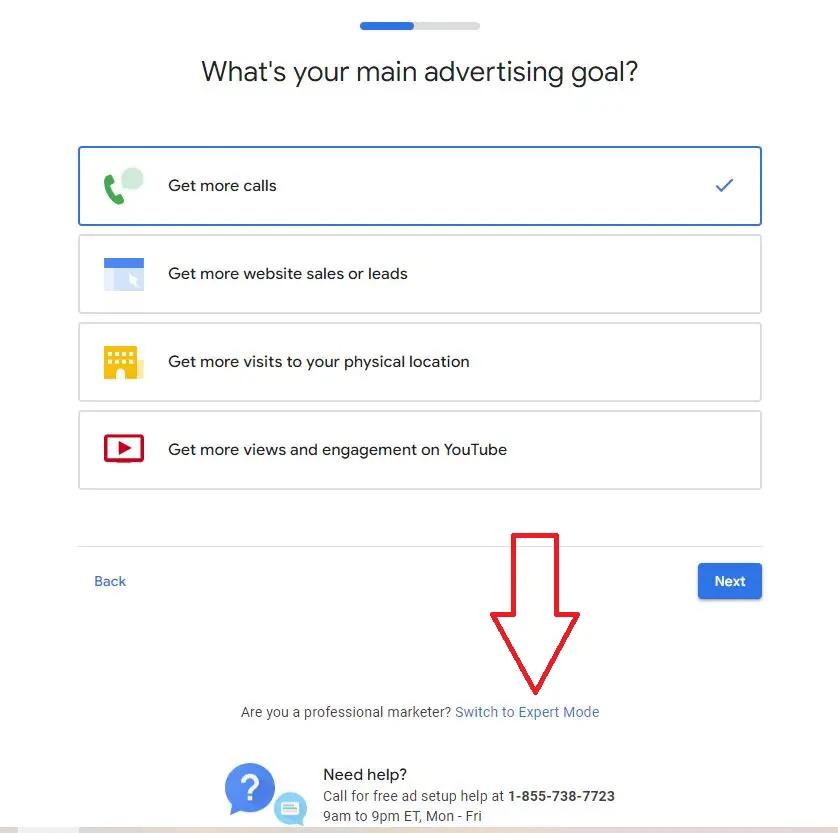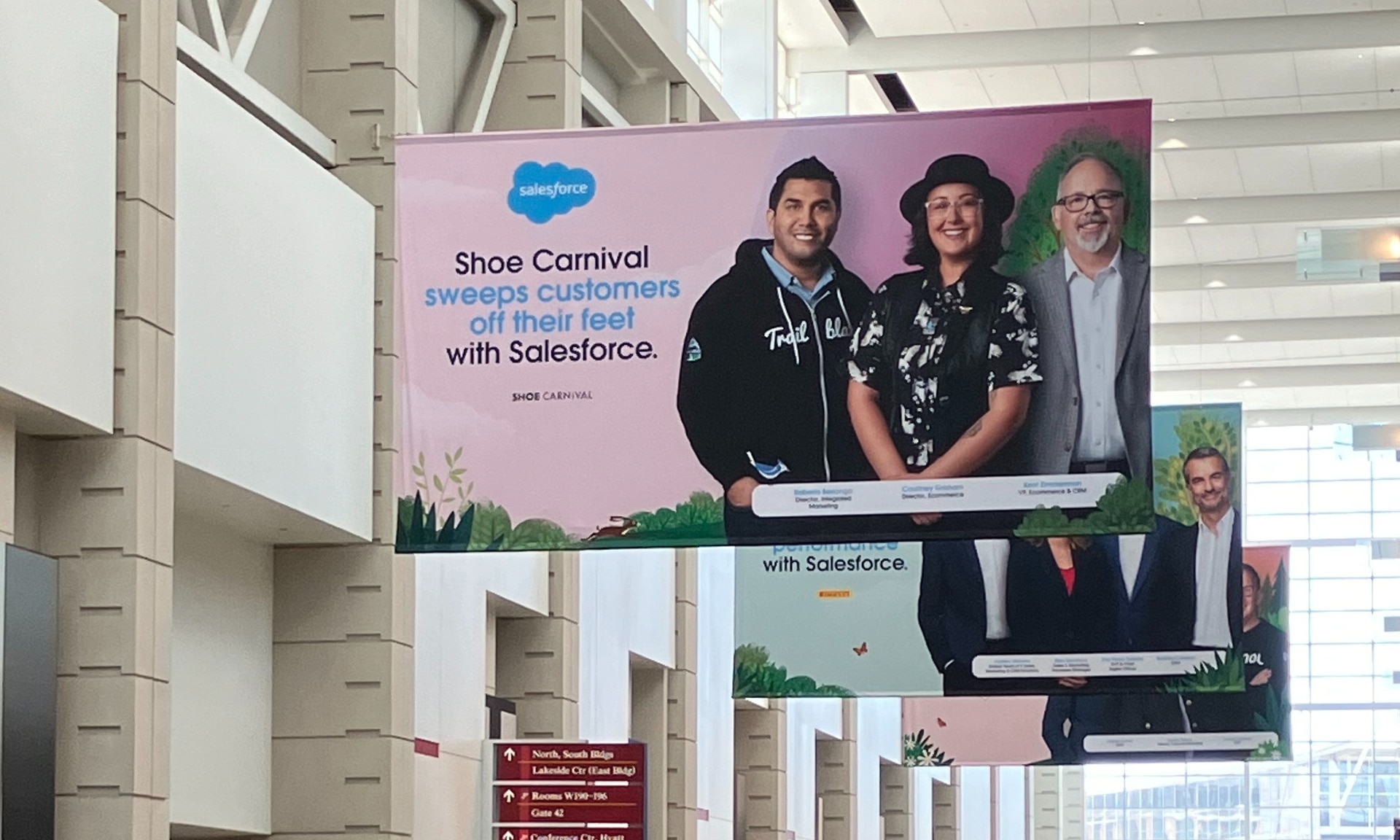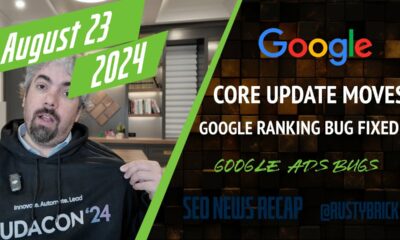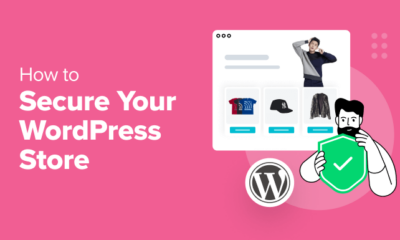MARKETING
Getting started with Google Ads marketing in 2022

If you are anything like the average person, you use Google 3-4 times a day. Google boasts a shocking 9 billion searches every single day. Despite this incredible volume of traffic, you’ve never put in your credit card number to subscribe to a search plan or paid a fee to look up restaurants near you.
That’s because Google is not just the world’s leading search engine. It’s also the world’s leading advertising platform, earning over 27% of all digital ad revenue. Google is a giant in the world of advertising, so putting Google Ads to work for your marketing campaigns is a proven strategy for success.
Getting started with Google Ads marketing can appear overwhelming from the outside. Google’s built-in tools simplify the process but also make it more expensive. This guide will show you how to get started with Google Ads marketing like a pro.
Key takeaways:
- Google is the world’s leading search engine as well as the world’s leading ad platform.
- Using Expert Mode will allow you to make the most of your advertising budget.
- Optimizely specializes in digital experiences, so you can advertise something worth drawing attention to.
Beginning with Google Ads marketing
All you need to start your first Google Ads campaign is a Google account and a URL to which you want to draw traffic. Google Ads coordinates advertising across several avenues, including YouTube ads, Google search results, banner ads on other websites, etc. With over 92% of the market share, Google is the world’s leading search engine, so you can easily create ads that reach thousands of people across multiple ad channels with Google Ads.
This guide will focus on Google search results as an example, but the overall process will be the same for other types of advertising channels.
When a user makes a Google search, there are two ways to make sure that your webpage is at the top of their results:
- Organic results result from good SEO (search engine optimization) and relevance. Organic results are appealing because they’re functionally free—you don’t have to pay Google to be a relevant search result—but the major downside is that achieving page one is highly competitive. Depending on your industry, earning a top listing on an organic search can be difficult or impossible without paid intervention.
- Paid results are at the very top of the page of every Google search, appearing ahead of even the most relevant and optimized organic results. The downside of paid results is that—as the name suggests—you have to pay for results. The upside, however, is that paid results appear at the top of a search result list based on your bid for the relevant keywords.
Define your strategy and budget
As with any journey, your Google Ads marketing journey will be full of crossroads. Making the right strategy for your organization necessitates that you have a well-defined destination.
The first component of your strategy is your landing page. A well-optimized digital experience goes a long way toward converting potential leads to loyal customers. For your Google Ads campaign to succeed, your landing page will not always necessarily be your website’s home page—the target URL should be a page catering to the specific needs of your audience and optimized to convert searchers into buyers.
The second component of your strategy is your budget. There are several ways to measure ad inventory budgets: the amount you’re willing to pay per impression, per click, per conversion, etc. Depending on the nature of your business, you may be willing to pay hundreds of dollars for each converted customer, or you may only be willing to pay a few cents. Your budget will depend on the nature and scale of your operation, but determining this budget ahead of time will allow you to allocate resources more efficiently throughout the process.
Plan for iteration. You probably won’t nail your campaign on the first try, and even if you do, you will need to test it to verify its quality. In advertising, A/B testing (or “Split Testing”) is a method of running multiple concurrent ads to evaluate their performance in an apples-to-apples comparison. Rather than budgeting for one large campaign, budget for flexible, iterative, ongoing campaigns.
Target your audience
An advertisement in the newspaper is likely to reach anybody who reads the paper, whether they are interested in your product or not. For some businesses, newspaper and print advertising is highly effective, but it requires advertisers to market to a large audience. Instead of casting a wide net, Google Ads helps you spearfish by targeting specific audiences based on multiple characteristics.
The tradeoff in target segmentation is that the more filters you apply, the higher your price per click will be, but as you narrow in on your target audience, each click is more likely to reach your desired users. Conversely, a broad audience is cheaper per click, but you are less likely to reach the quality traffic you seek. Targeting an audience is about finding the sweet spot where your price and value per click are in the optimal balance.
For that reason, you don’t want Google to automate this process for you. Google Ads, by default, will suggest things like demographics, descriptions and keywords, but two things power this automation:
- Its algorithms make guesses about your marketing plan based on your URL. While this technology is impressive, it isn’t a substitute for human planning. You know your campaign more intimately and thoroughly than Google does.
- It makes money off of ad dollars. That means that it has an incentive to suggest more expensive services, whether they best suit your needs or not.
For those two reasons, don’t use Google’s automated suggestions. After answering a few introductory questions, a link to Expert Mode will appear at the bottom of your screen. Select Expert Mode, but don’t worry if you don’t feel like an expert yet! You’ll be well on your way to success with a little trial and error.

Google will ask you about your objectives and campaign type. Objectives range from sales, web traffic and local store visits, while campaigns include search campaigns (the example in this guide), shopping and performance max—a type of campaign that incorporates multiple ad channels into one campaign.
After you’ve answered those questions, Google will allow you to choose your target audience and define your budget before moving on to the Keywords section.
Keywords
Once again, Google will try to automate this part of your journey by suggesting keywords based on your target URL. While these suggestions can be helpful, they will most likely be incomplete—you should always review Google’s suggestions and rely on your own keyword research.
With Google Ads, you can use broad match (matches keywords, semantic variations and synonyms), exact match (matches only the exact word or phrase) and even negative keywords to avoid. For example, if your business shares a name with a popular restaurant, you may want to include keywords relevant to your business while omitting negative keywords like “restaurant.”
After you’ve entered your keywords, the next page will give you options for multiple headlines and descriptions. The best practice for crafting headlines and descriptions that stand out is to use eye-catching text that includes numbers, special characters (if relevant) and appropriate capital letters.
Headlines can be 30 characters, and descriptions can be a maximum of 90. Try using as much of that space as possible to get the most value out of your ad dollars.
Optimizely can help
Google Ads is a powerful tool to drive sales and fill your sales funnel, but without an appealing and effective digital experience to drive traffic to, advertising can only do so much.
Optimizely specializes in digital experiences and can help you with everything from A/B testing, content management and e-commerce.
To learn how Optimizely can revolutionize your digital experience management, schedule a discovery meeting and customized demo today.
MARKETING
YouTube Ad Specs, Sizes, and Examples [2024 Update]
![YouTube Ad Specs, Sizes, and Examples [2024 Update] YouTube Ad Specs, Sizes, and Examples](https://articles.entireweb.com/wp-content/uploads/2024/06/YouTube-Ad-Specs-Sizes-and-Examples.jpg)
Introduction
With billions of users each month, YouTube is the world’s second largest search engine and top website for video content. This makes it a great place for advertising. To succeed, advertisers need to follow the correct YouTube ad specifications. These rules help your ad reach more viewers, increasing the chance of gaining new customers and boosting brand awareness.
Types of YouTube Ads
Video Ads
- Description: These play before, during, or after a YouTube video on computers or mobile devices.
- Types:
- In-stream ads: Can be skippable or non-skippable.
- Bumper ads: Non-skippable, short ads that play before, during, or after a video.
Display Ads
- Description: These appear in different spots on YouTube and usually use text or static images.
- Note: YouTube does not support display image ads directly on its app, but these can be targeted to YouTube.com through Google Display Network (GDN).
Companion Banners
- Description: Appears to the right of the YouTube player on desktop.
- Requirement: Must be purchased alongside In-stream ads, Bumper ads, or In-feed ads.
In-feed Ads
- Description: Resemble videos with images, headlines, and text. They link to a public or unlisted YouTube video.
Outstream Ads
- Description: Mobile-only video ads that play outside of YouTube, on websites and apps within the Google video partner network.
Masthead Ads
- Description: Premium, high-visibility banner ads displayed at the top of the YouTube homepage for both desktop and mobile users.
YouTube Ad Specs by Type
Skippable In-stream Video Ads
- Placement: Before, during, or after a YouTube video.
- Resolution:
- Horizontal: 1920 x 1080px
- Vertical: 1080 x 1920px
- Square: 1080 x 1080px
- Aspect Ratio:
- Horizontal: 16:9
- Vertical: 9:16
- Square: 1:1
- Length:
- Awareness: 15-20 seconds
- Consideration: 2-3 minutes
- Action: 15-20 seconds
Non-skippable In-stream Video Ads
- Description: Must be watched completely before the main video.
- Length: 15 seconds (or 20 seconds in certain markets).
- Resolution:
- Horizontal: 1920 x 1080px
- Vertical: 1080 x 1920px
- Square: 1080 x 1080px
- Aspect Ratio:
- Horizontal: 16:9
- Vertical: 9:16
- Square: 1:1
Bumper Ads
- Length: Maximum 6 seconds.
- File Format: MP4, Quicktime, AVI, ASF, Windows Media, or MPEG.
- Resolution:
- Horizontal: 640 x 360px
- Vertical: 480 x 360px
In-feed Ads
- Description: Show alongside YouTube content, like search results or the Home feed.
- Resolution:
- Horizontal: 1920 x 1080px
- Vertical: 1080 x 1920px
- Square: 1080 x 1080px
- Aspect Ratio:
- Horizontal: 16:9
- Square: 1:1
- Length:
- Awareness: 15-20 seconds
- Consideration: 2-3 minutes
- Headline/Description:
- Headline: Up to 2 lines, 40 characters per line
- Description: Up to 2 lines, 35 characters per line
Display Ads
- Description: Static images or animated media that appear on YouTube next to video suggestions, in search results, or on the homepage.
- Image Size: 300×60 pixels.
- File Type: GIF, JPG, PNG.
- File Size: Max 150KB.
- Max Animation Length: 30 seconds.
Outstream Ads
- Description: Mobile-only video ads that appear on websites and apps within the Google video partner network, not on YouTube itself.
- Logo Specs:
- Square: 1:1 (200 x 200px).
- File Type: JPG, GIF, PNG.
- Max Size: 200KB.
Masthead Ads
- Description: High-visibility ads at the top of the YouTube homepage.
- Resolution: 1920 x 1080 or higher.
- File Type: JPG or PNG (without transparency).
Conclusion
YouTube offers a variety of ad formats to reach audiences effectively in 2024. Whether you want to build brand awareness, drive conversions, or target specific demographics, YouTube provides a dynamic platform for your advertising needs. Always follow Google’s advertising policies and the technical ad specs to ensure your ads perform their best. Ready to start using YouTube ads? Contact us today to get started!
MARKETING
Why We Are Always ‘Clicking to Buy’, According to Psychologists

Amazon pillows.
MARKETING
A deeper dive into data, personalization and Copilots

Salesforce launched a collection of new, generative AI-related products at Connections in Chicago this week. They included new Einstein Copilots for marketers and merchants and Einstein Personalization.
To better understand, not only the potential impact of the new products, but the evolving Salesforce architecture, we sat down with Bobby Jania, CMO, Marketing Cloud.
Dig deeper: Salesforce piles on the Einstein Copilots
Salesforce’s evolving architecture
It’s hard to deny that Salesforce likes coming up with new names for platforms and products (what happened to Customer 360?) and this can sometimes make the observer wonder if something is brand new, or old but with a brand new name. In particular, what exactly is Einstein 1 and how is it related to Salesforce Data Cloud?
“Data Cloud is built on the Einstein 1 platform,” Jania explained. “The Einstein 1 platform is our entire Salesforce platform and that includes products like Sales Cloud, Service Cloud — that it includes the original idea of Salesforce not just being in the cloud, but being multi-tenancy.”
Data Cloud — not an acquisition, of course — was built natively on that platform. It was the first product built on Hyperforce, Salesforce’s new cloud infrastructure architecture. “Since Data Cloud was on what we now call the Einstein 1 platform from Day One, it has always natively connected to, and been able to read anything in Sales Cloud, Service Cloud [and so on]. On top of that, we can now bring in, not only structured but unstructured data.”
That’s a significant progression from the position, several years ago, when Salesforce had stitched together a platform around various acquisitions (ExactTarget, for example) that didn’t necessarily talk to each other.
“At times, what we would do is have a kind of behind-the-scenes flow where data from one product could be moved into another product,” said Jania, “but in many of those cases the data would then be in both, whereas now the data is in Data Cloud. Tableau will run natively off Data Cloud; Commerce Cloud, Service Cloud, Marketing Cloud — they’re all going to the same operational customer profile.” They’re not copying the data from Data Cloud, Jania confirmed.
Another thing to know is tit’s possible for Salesforce customers to import their own datasets into Data Cloud. “We wanted to create a federated data model,” said Jania. “If you’re using Snowflake, for example, we more or less virtually sit on your data lake. The value we add is that we will look at all your data and help you form these operational customer profiles.”
Let’s learn more about Einstein Copilot
“Copilot means that I have an assistant with me in the tool where I need to be working that contextually knows what I am trying to do and helps me at every step of the process,” Jania said.
For marketers, this might begin with a campaign brief developed with Copilot’s assistance, the identification of an audience based on the brief, and then the development of email or other content. “What’s really cool is the idea of Einstein Studio where our customers will create actions [for Copilot] that we hadn’t even thought about.”
Here’s a key insight (back to nomenclature). We reported on Copilot for markets, Copilot for merchants, Copilot for shoppers. It turns out, however, that there is just one Copilot, Einstein Copilot, and these are use cases. “There’s just one Copilot, we just add these for a little clarity; we’re going to talk about marketing use cases, about shoppers’ use cases. These are actions for the marketing use cases we built out of the box; you can build your own.”
It’s surely going to take a little time for marketers to learn to work easily with Copilot. “There’s always time for adoption,” Jania agreed. “What is directly connected with this is, this is my ninth Connections and this one has the most hands-on training that I’ve seen since 2014 — and a lot of that is getting people using Data Cloud, using these tools rather than just being given a demo.”
What’s new about Einstein Personalization
Salesforce Einstein has been around since 2016 and many of the use cases seem to have involved personalization in various forms. What’s new?
“Einstein Personalization is a real-time decision engine and it’s going to choose next-best-action, next-best-offer. What is new is that it’s a service now that runs natively on top of Data Cloud.” A lot of real-time decision engines need their own set of data that might actually be a subset of data. “Einstein Personalization is going to look holistically at a customer and recommend a next-best-action that could be natively surfaced in Service Cloud, Sales Cloud or Marketing Cloud.”
Finally, trust
One feature of the presentations at Connections was the reassurance that, although public LLMs like ChatGPT could be selected for application to customer data, none of that data would be retained by the LLMs. Is this just a matter of written agreements? No, not just that, said Jania.
“In the Einstein Trust Layer, all of the data, when it connects to an LLM, runs through our gateway. If there was a prompt that had personally identifiable information — a credit card number, an email address — at a mimum, all that is stripped out. The LLMs do not store the output; we store the output for auditing back in Salesforce. Any output that comes back through our gateway is logged in our system; it runs through a toxicity model; and only at the end do we put PII data back into the answer. There are real pieces beyond a handshake that this data is safe.”
-

 SEO7 days ago
SEO7 days agoGoogle’s Revamped Documentation Shows 4 Reasons To Refresh Content
-
SEARCHENGINES5 days ago
Daily Search Forum Recap: August 26, 2024
-

 SEARCHENGINES7 days ago
SEARCHENGINES7 days agoGoogle Ranking Bug Fixed, August Core Update Swings, AI Overviews, Google Ads Bug & More
-

 WORDPRESS7 days ago
WORDPRESS7 days agoHow to Secure Your WordPress Store
-
SEARCHENGINES4 days ago
Daily Search Forum Recap: August 27, 2024
-

 AFFILIATE MARKETING7 days ago
AFFILIATE MARKETING7 days agoBusiness Owners are Batting 1,000 With This All-in-One Management Hub
-

 SEARCHENGINES6 days ago
SEARCHENGINES6 days agoGoogle Migrating All To Google Merchant Center Next By September
-

 WORDPRESS5 days ago
WORDPRESS5 days ago10 Best StudioPress Alternatives (Genesis Framework)















You must be logged in to post a comment Login